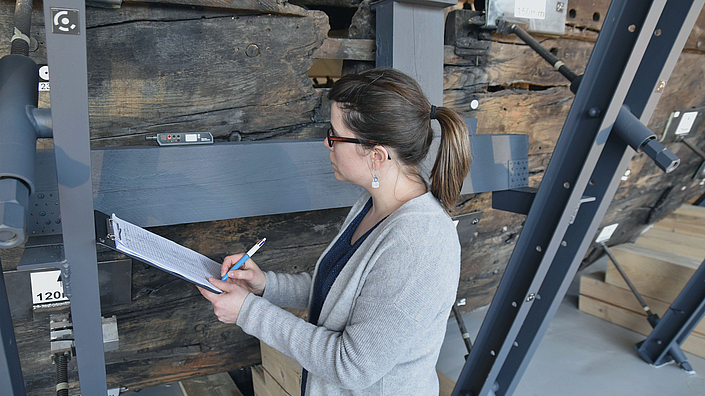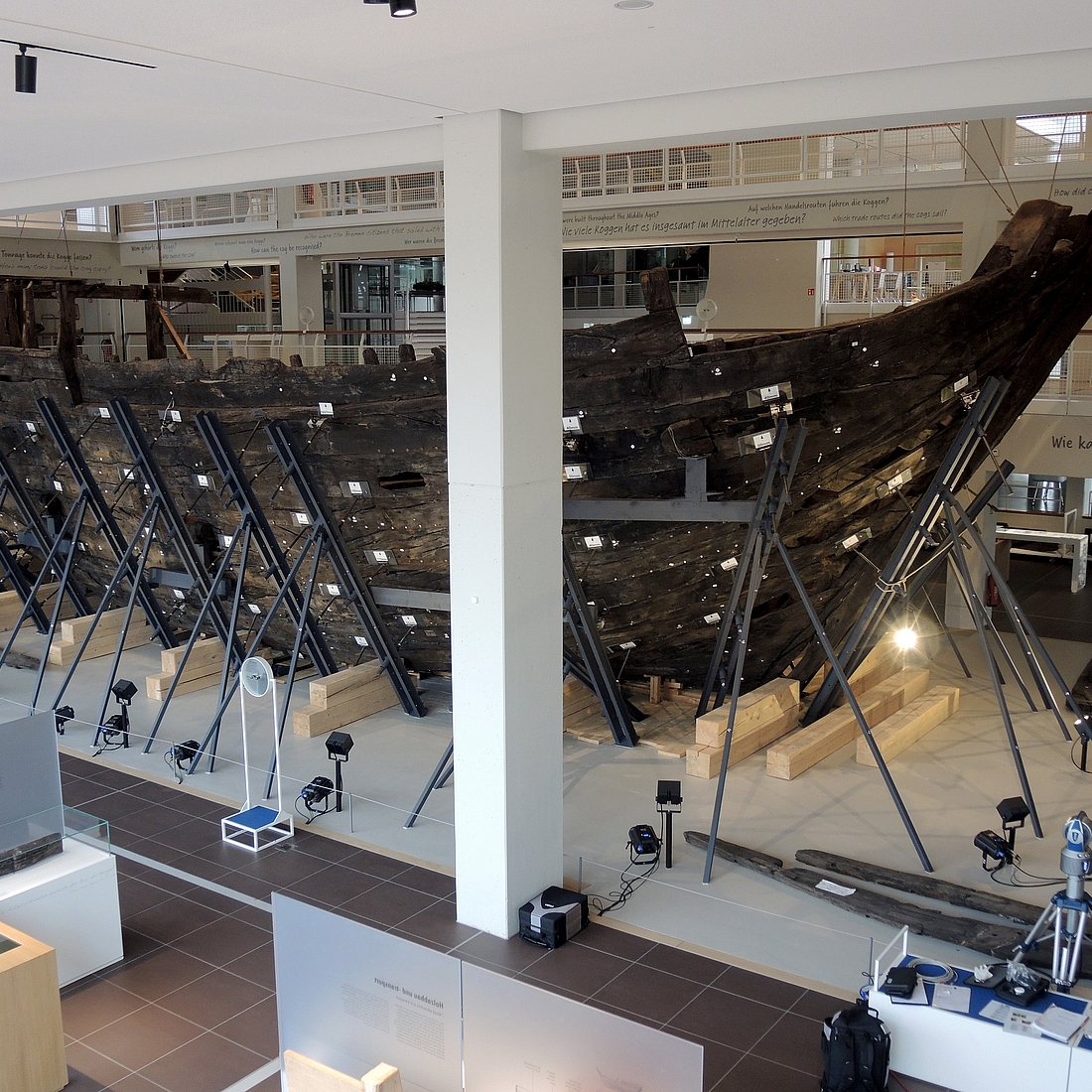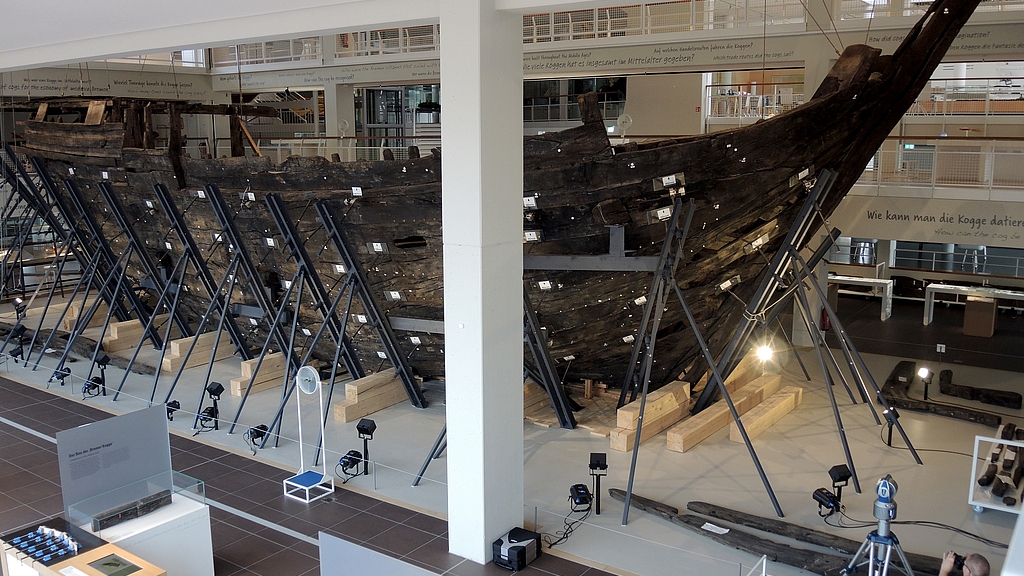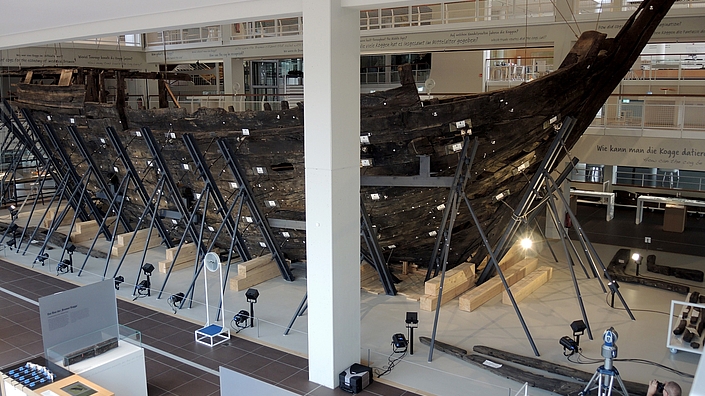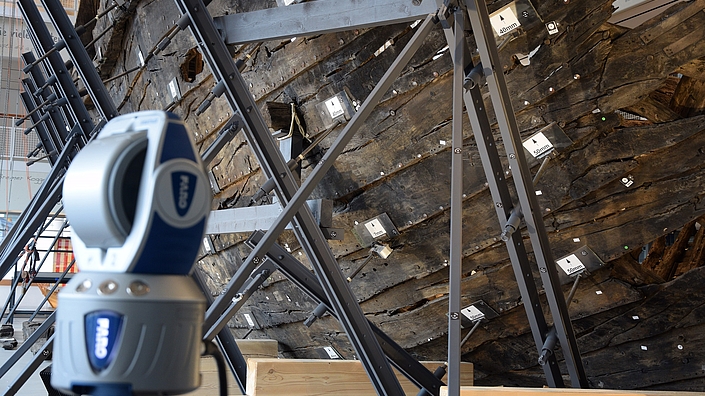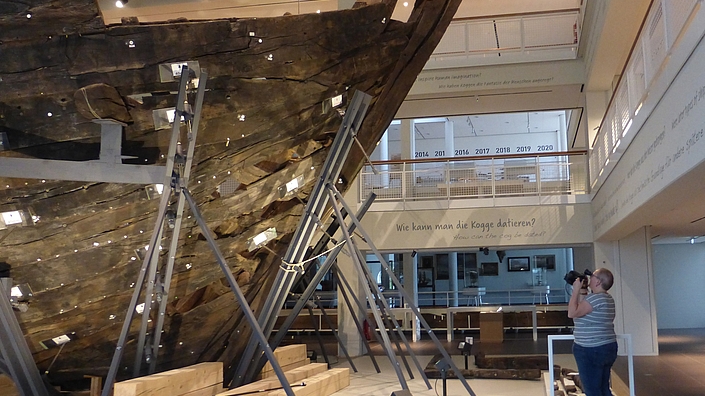The measurement of the cog
Scientists* at Jade University investigate the deformation of the historical merchant ship in the DSM
In the Middle Ages as a merchant ship on the world's oceans, for decades as a wreck under water, now exhibited in the German Maritime Museum - the history of the "Bremen Cog" is long. To ensure that the merchant ship and thus an important part of maritime history is preserved, extensive conservation work is necessary. Scientists* at the Jade University of Applied Sciences create the conditions for this by measuring how the wreck, which is over 600 years old, deforms.
Not an off-the-peg research project
Optical three-dimensional measuring methods are suitable for determining the deformation of the shipwreck, which is over 20 metres long and almost eight metres wide, with millimetre accuracy. The research team led by Prof. Dr. Thomas Luhmann and Heidi Hastedt from the Institute for Applied Photogrammetry and Geoinformatics at Jade University quickly realised this.
The scientists* attached around 200 so-called measuring marks to the cog - using a special adhesive process so that the points can be removed from the shipwreck without causing any damage.
"The measuring points, one centimeter in diameter, are inconspicuous and only become really visible when a camera flashes," says Hastedt. Using a photogrammetric measuring camera, the geodesists took around 400 pictures per measurement - from all sides, on all levels and in various orientations. "What you see in the images are simply white dots on a black background," explains the scientist. The multi-image triangulation, a mathematical reconstruction from different images, produces three-dimensional coordinates. Measuring in chronologically staggered epochs thus gives an exact picture of the deformation of the entire cog.
"We are investigating here the permanent change in the overall geometry, not the deformation of individual wooden parts," says Hastedt.
Challenges in the research process
Amandine Colson, restorer at the German Maritime Museum, contacted the experts* at Jade University as early as 2016. "At that time we knew that the cog was deforming, but we didn't know how much and why," explains Colson. Since then, the researchers have defined goals, performed test measurements, tried out various procedures, evaluated the data and checked again and again to see if they are still on the right track. After a year and a half of preparation, the main measurements can now begin, and will be carried out twice a year for the next ten years.
Some challenges made the research process more difficult, adds Hastedt: "These naturally include the size of the object and the complex requirements. In addition, the shipwreck is not accessible from all sides - the keel and parts of the lower hull are difficult to access due to the exhibition - which means that measuring points cannot easily be placed there. The museum is also still accessible to visitors who should not be disturbed by the measurements. And an unexpected challenge was also added: The German Maritime Museum is located on an island between the Weser and the harbour basin and the surrounding water, the tides, have an effect on the building - and could thus also have an influence on the deformation of the cog. "Right from the start, this project was not an off-the-peg research project," says Hastedt. "That makes it all the more exciting."
"Bremen Cog" - new support system
The "Bremen Cog" exhibited in the German Maritime Museum is the best preserved medieval merchant ship in the world. The shipwreck from the 14th century was found in the Weser in 1962. From 1972 to 1978 it was reconstructed, then elaborately conserved and exhibited for the first time in 2000.
One year later the first deformations were already noticed. In order to stabilize the ship, which was previously "suspended" from the ceiling, it was additionally surrounded by a steel framework. However, the steel structure also pressed on the wood and thus contributed to the deformation, so that a new support system is being considered for the long term. "It would be conceivable to fill the cog from the inside with a skeleton that holds the wooden elements together," explains Colson. But that would cost millions. "Before we think any further, we'll have to wait for the results of the measurements."
Related contributions
-Research Object "Bremen Cog"
The salvage of the wreck from the port area in Bremen Rablinghausen was the beginning of a research history that continues to this day. We cordially invite you to accompany us on this journey!
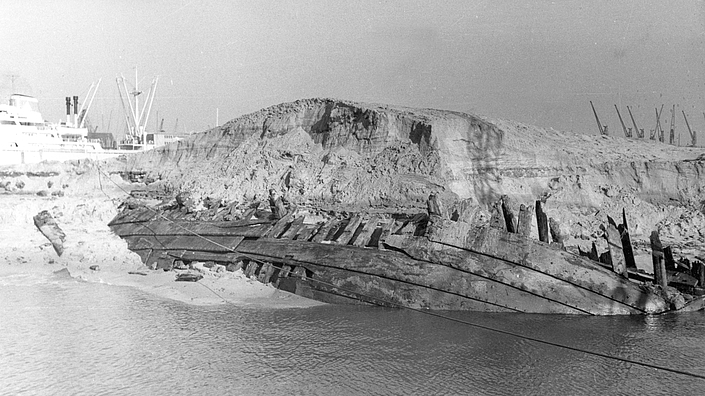
The "Bremen Cog" from the Hanseatic era - 600 years of history to marvel at
Experience the world's best preserved medieval merchant ship up close and learn more about life on board, its construction and today's cult
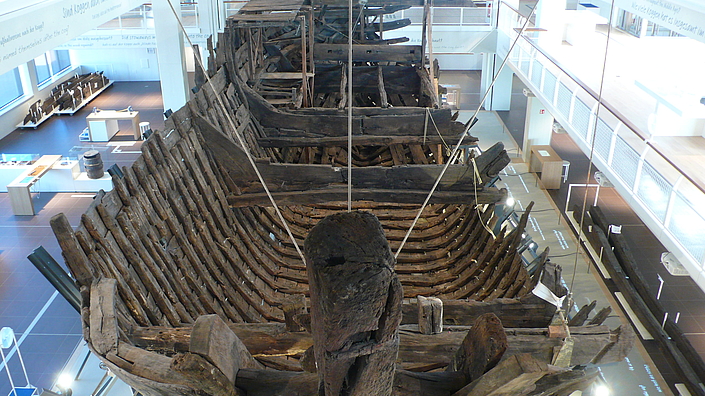
Three-dimensional preventive conservation
Nowadays new technologies in the field of conservation are irreplaceable. In the context of a doctoral thesis a monitoring system with photogrammetry is developed for the Bremen Cog.
